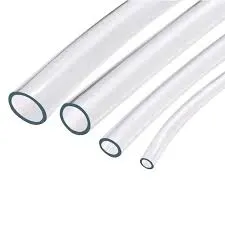Desemba . 06, 2024 10:02 Back to list
pvc pipe coupling
Understanding PVC Pipe Couplings A Comprehensive Guide
Polyvinyl Chloride (PVC) has established itself as one of the most popular materials in plumbing and construction because of its durability, versatility, and cost-effectiveness. One of the essential components in any piping system is the coupling, which connects two lengths of pipe. This article delves into the significance of PVC pipe couplings, their types, installation methods, and benefits.
What are PVC Pipe Couplings?
PVC pipe couplings are fittings that join two pieces of PVC pipe to create a continuous pathway for water, air, or other liquids. They are crucial for maintaining seamless flow within plumbing, drainage, irrigation, and industrial systems. Couplings can accommodate changes in pipe diameter, direction, or even different types of materials, depending on the specific requirements of a project.
Types of PVC Pipe Couplings
1. Slip Couplings These are the most common type of PVC coupling. They allow for the connection of two pipes of the same diameter by sliding over the ends of the pipes. Slip couplings do not have any external threads or fittings, which makes them simple and straightforward to install. They are ideal for creating straight connections.
2. Compounded Couplings These couplings are designed for joints that need to accommodate slight misalignments in pipe lengths. They provide a bit more flexibility during installation, which can be beneficial in complex systems.
3. Reducing Couplings Reducing couplings are used when connecting pipes of different diameters. One end of the coupling is larger than the other, facilitating the transition from a larger pipe to a smaller one while maintaining a proper flow.
4. Female and Male Threaded Couplings These fittings have internal and external threads, respectively, allowing you to connect threaded pipes or attach additional fittings. They are particularly useful in situations where frequent disassembly is required for maintenance or modification.
5. Elbow and Tee Couplings Specially designed for changing the direction of flow or creating branch connections in a piping system. Elbow couplings allow for 90-degree or 45-degree angles, while tee couplings provide an additional outlet for connecting another pipe.
pvc pipe coupling

Benefits of Using PVC Couplings
1. Durability PVC is resistant to rust and corrosion, ensuring a long lifespan even in harsh environments. This durability makes PVC couplings an excellent choice for both indoor and outdoor applications.
2. Ease of Installation The lightweight nature of PVC means that it is easy to handle and transport. Additionally, the installation process is straightforward and doesn’t require special tools, which reduces labor costs.
3. Cost-Effectiveness PVC pipe couplings are generally less expensive than those made from metal or other materials. Their long-lasting nature further enhances cost benefits over time, as there is less need for replacements.
4. Chemical Resistance PVC couplings resist a wide range of chemicals, making them suitable for various applications, including sewage, drainage, and chemical processing systems.
5. Low Maintenance Once installed, PVC piping and couplings require minimal maintenance. Their smooth interior surface helps prevent clogs and ensures efficient flow, reducing the need for frequent cleaning or repairs.
Installation of PVC Pipe Couplings
The installation of PVC pipe couplings typically involves cutting the pipes to the desired length and ensuring that the ends are smooth and free from burrs. A primer and solvent cement are often used to secure the coupling to the pipes. It’s crucial to follow manufacturer instructions for the best results, ensuring a watertight seal that will withstand pressure and prevent leaks.
Conclusion
PVC pipe couplings are indispensable components in modern plumbing and construction. Their variety, durability, and ease of installation make them a preferred choice for professionals and DIY enthusiasts alike. Understanding the different types of PVC couplings and their applications can enhance the efficiency and reliability of any piping system. Whether for residential, commercial, or industrial use, choosing the right coupling is essential to achieving a successful and long-lasting connection.
-
PP U-channel: Chemical-Resistant, Lightweight & Durable
NewsAug.10,2025
-
Transparent PVC Pipe: Clear Flexible Tubing for Fluids
NewsAug.09,2025
-
Durable PP Rigid Sheet: Versatile & High-Quality Plastic Panels
NewsAug.08,2025
-
Premium Glossy PP Rigid Sheet – Durable & Versatile
NewsAug.07,2025
-
High-Quality HDPE Sheet | Durable Plastic Panels
NewsAug.06,2025
-
High-Precision PVC Rigid Sheets for Vacuum Forming | AI-Optimized
NewsAug.05,2025

